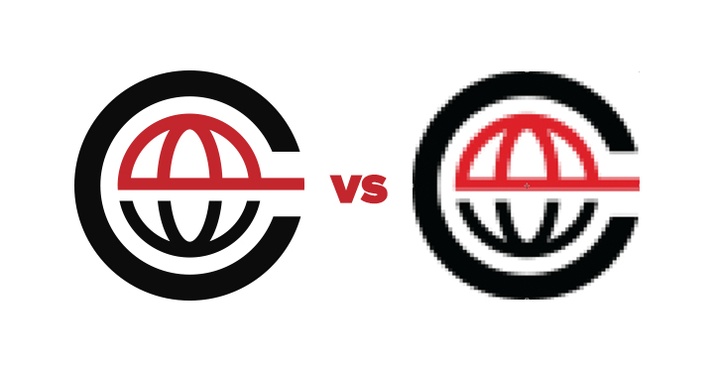Vector vs. Raster - Why Vector Artwork is Required

Have you ever tried to upload your company logo into software, only to get stuck with a pixelated image? Most likely the image file you have is a Raster Graphic, and most tools, such as the one we use at Continental Headwear, utilize vector files. Here’s a brief overview on each graphic type and how to properly take advantage of them.
Raster Graphics
This classification of image is made up of potentially millions of tiny elements of color information often referred to as pixels or dots. The most popular form of raster graphic is a photograph and Adobe Photoshop is most often used to modify or edit raster files. The most common raster graphic file formats include: jpg/jpeg, psd, png, tiff, bmp and gif. Each of these tiny, single pixels can be modified so the level of editing is truly unlimited.
The most common challenge to using raster images is that they can become pixelated, or grainy when you try to enlarge them. In the original photograph, there are a set amount of pixels within the image. When enlarging this image, the computer estimates what colors and shades should fill in the gaps; the result will be a blur. Since working with all these data points is resource intensive, large raster files can even slow down your computer.
Vector Graphics
Vector graphics use math to draw calculated shapes into points, lines, and curves, thereby creating an image. Think of it as an outline where the program “connects the dots” to fill in the image. The most common use cases of images are fonts and logos and they can be edited in Adobe Illustrator. When sizing up a Vector graphic, you never have to worry about pixilation.
When submitting an art or logo for embroidering with Continental, we insist on vector graphic files only. Vector files are necessary so the images can be manipulated to its fullest. Jpegs, bmp, and png files tend to be low resolution and will make the finished product look fuzzy and distorted.
Have DST files? Even better! DST Files are production files that we can directly import to embroider your design.
If you have any questions or concerns, don’t hesitate to reach out to us!